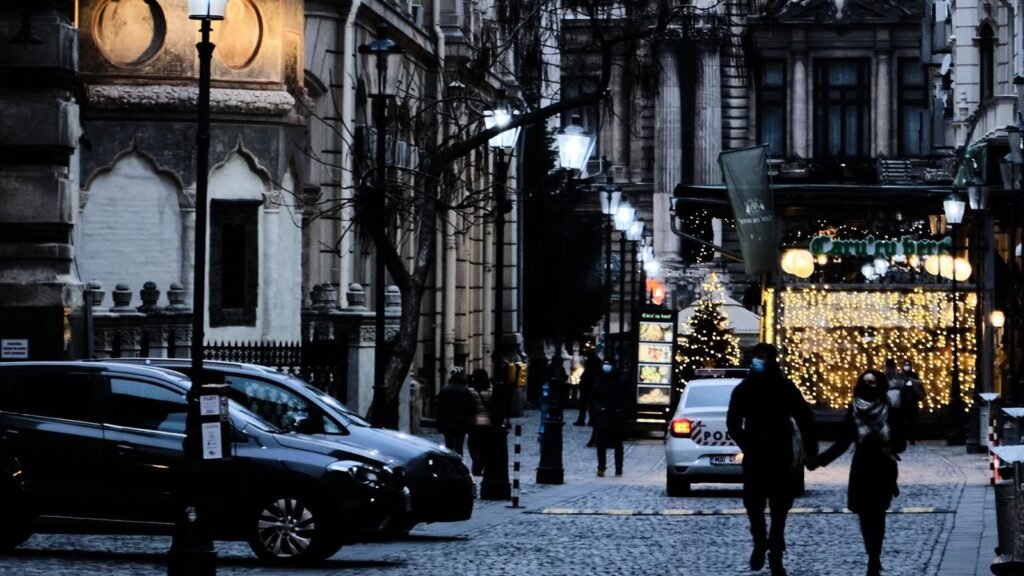Two hours in Bucharest Old Town is a bit like being handed a backstage pass to a centuries-old cabaret—complete with Ottoman whispers, French flirtations, Communist hangovers, and a splash of modern-day hipsterdom. You’re not going to see everything. But you’ll definitely see enough to raise an eyebrow or two. Lace up, and keep your phone charged—this stroll is made for gawking.
Start at the intersection of history and urban rumble: Piata Universitatii. It’s one of those spots that looks like it can’t decide whether it wants to be a protest square, a pigeon sanctuary, or a transport hub. It’s also where the 1989 Revolution played out in full emotional technicolour. Glance at the crosses and memorials that still stand, slightly obscured by buses, and then duck through the tunnel that leads to Bulevardul Ion C. Brătianu. Within five minutes you’ll be in a different world.
Your feet will hit Lipscani Street, the main artery of Bucharest’s Old Town. It’s cobbled, so if you came in heels, you’ll regret your life choices now. On your left, there’s the rather lovely Cărturești Carusel, a bookshop that looks like Instagram had a baby with a classical theatre. Spiral staircases, indoor balconies, and books that smell faintly of poetic angst. Pop in, even if just to pretend you’re considering Romanian translations of Proust.
Exit stage right and keep going past the usual sprawl of cafés, bakeries, and people who believe Bluetooth speakers make them DJs. You’ll soon bump into the gorgeous Macca-Vilacrosse Passage. This is Bucharest pretending it’s Paris on a budget. A glass-covered arcade shaped like a pitchfork, lined with cafés and shisha lounges, where the lighting is permanently golden and everything feels like 1890s time travel. Pause for a coffee or a lemonade, or just stand there soaking in the ceiling.
From there, meander over to Stavropoleos Church. It’s tiny, but it’s the architectural equivalent of someone whispering a poem in your ear. Built in 1724, this gem of Brâncovenesc style has intricate wood carvings, faded frescoes, and a peaceful cloister that seems to repel modern noise. Step inside if it’s open—just be quiet. Even the walls are trying to pray.
Next, let your feet guide you to the National Bank of Romania. Not the most obvious tourist draw, but surprisingly grand, especially if you’re into columns, domes, and gold. The two buildings, old and new, sit smugly next to each other like aristocratic cousins who’ve just rediscovered they’re both loaded.
A short wander to the north brings you to Hanul lui Manuc. It’s the oldest inn in Bucharest, built by a wealthy Armenian in the early 1800s who knew how to combine hospitality with a solid geopolitical hustle. The inner courtyard is full of wooden balconies, wrought-iron railings, and the ghostly echo of toasts raised centuries ago. These days it houses a restaurant and wine cellar, and if the mood strikes, you can sample sarmale and polenta and pretend you’ve time-travelled.
Veer right and you’ll find the ruins of the Old Princely Court, also known as Curtea Veche. This was the palace of Vlad the Impaler, yes, that Vlad—Bram Stoker’s muse and Wallachia’s own moody warlord. There’s not much left of the palace itself, just fragments and whispers, but the statue of Vlad stands guard like he’s ready to scowl at anyone wearing Crocs.
Adjacent to this history-in-decay is the Old Court Church (Biserica Curtea Veche), the oldest religious building in the city. The frescoes look like they’ve seen things, and the worn stone threshold feels like it’s been stepped on by half the Balkan peninsula.

Your final stretch takes you along Franceză Street. This was once the chic spot for foreign merchants and gentlemen of questionable virtue. Now it’s a string of bars, restaurants, and one very persistent gelato stand. You might hear jazz, you might hear techno—it’s that sort of street. Keep an eye out for the St. George Church at the eastern end. It’s one of the few Orthodox churches that’s both imposing and charming, like a monk who moonlights as an actor.
By now, your two hours in Bucharest Old Town are up. You’ve walked past 18th-century innkeepers, 15th-century princelings, French-dreaming architects, and revolutionaries in knock-off Adidas. You’ve seen the contradictions—Byzantine huddling up to Bauhaus, ancient chapels parked next to espresso bars, Vlad the Impaler overlooking someone drinking Aperol Spritz at noon. That’s Bucharest for you.
Now grab a table at any terrace still open, order a drink with a name you can’t pronounce, and enjoy the strange, lovely buzz of a city that doesn’t always make sense—but never stops trying to.
